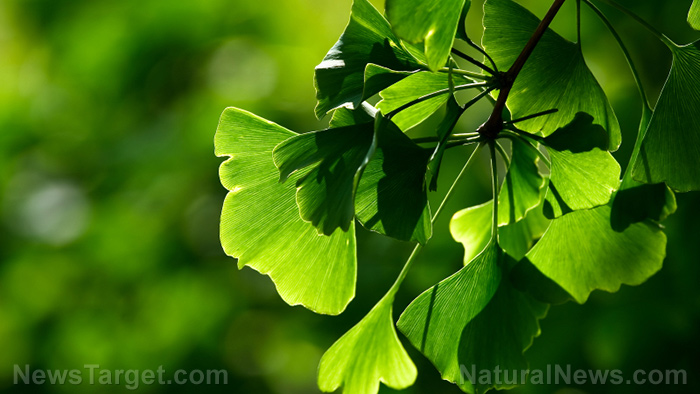Black-eyed peas: A versatile, nutrient-dense addition to health-conscious meals
11/05/2025 / By Laura Harris

- Black-eyed peas, originally from West Africa, have been cultivated for thousands of years and became a symbol of nourishment and resilience in the Americas, especially in Southern U.S. cuisine and traditions like Hoppin’ John.
- They are rich in protein, fiber, folate, iron, potassium, magnesium and antioxidants, making them a highly nutritive food with diverse health benefits.
- Black-eyed peas support cell development, oxygen transport, heart and immune health, blood sugar stability and digestive function, and help reduce cholesterol and oxidative stress.
- Conventionally grown black-eyed peas may contain pesticide residues or absorb heavy metals from soil; organic and transparently sourced options are the safest choice.
- Black-eyes peas are featured in global dishes like Hoppin’ John, Texas caviar, akara, lobia masala and Mediterranean stews, and are valued for their flavor, adaptability and nutritional value across cultures.
Black-eyed peas, also known as cowpeas (Vigna unguiculata), are a small but mighty legume that have earned their place in both traditional diets and modern superfood conversations. With their creamy texture, nutty flavor and distinctive black “eye” on their pale body, these legumes are far more than just a Southern staple. They’re nutrient-dense, versatile and deeply rooted in agricultural and cultural history.
Black-eyed peas are believed to have originated in West Africa, where they have been cultivated for thousands of years. From there, they spread to Asia and the Mediterranean. During the transatlantic slave trade, black-eyed peas were brought to the Americas, where they took root in Southern cuisine, particularly in the United States. Enslaved Africans not only brought the seeds but also their knowledge of growing and cooking them, making black-eyed peas a symbol of cultural resilience and nourishment.
In the American South, black-eyed peas are associated with good luck, especially when eaten on New Year’s Day in dishes like Hoppin’ John–a combination of peas, rice and pork. The dish symbolizes prosperity, with the peas representing coins.
Nutritional profile of black-eyed peas
Black-eyed peas are a low-fat, high-protein food rich in essential nutrients. One cup of cooked black-eyed peas offers:
- 13 grams (g) of protein
- 11 g of fiber
- Folate (vitamin B9)
- Iron
- Potassium
- Magnesium
- Zinc
- Copper
- Antioxidants
Health benefits of black-eyed peas
Black-eyed peas are more than just a flavorful legume–they’re packed with essential nutrients that offer a wide range of health benefits. From supporting cellular function to promoting heart and digestive health, black-eyed peas are a smart and wholesome addition to a balanced diet.
Supports cell development
- Black-eyed peas are an excellent source of folate (vitamin B9), a nutrient vital for DNA synthesis and cell division. This makes black-eyed peas especially good for pregnant women, as folate supports healthy fetal development and helps prevent neural tube defects.
Supports oxygen transport
- The iron in black-eyed peas is essential for the production of hemoglobin, the protein in red blood cells that carries oxygen throughout the body. Adequate iron intake ensures that tissues and organs receive the oxygen they need for optimal function.
Helps prevent anemia
- The combination of iron and folate in black-eyed peas plays a key role in preventing anemia, a condition characterized by low red blood cell count. Regular consumption can help maintain healthy blood production and reduce fatigue associated with anemia.
Crucial for cardiovascular health
- Black-eyed peas are high in potassium, a mineral that helps regulate blood pressure by counteracting the effects of sodium. Their fiber content also supports heart health by helping improve arterial function.
Essential for metabolic processes and immunity
- Black-eyed peas provide essential minerals like magnesium, zinc and copper, all of which are critical for metabolic enzyme activities and immune response. Magnesium supports energy production, while zinc and copper contribute to immune cell development and antioxidant defense.
Helps fight oxidative stress
- Black-eyed peas contain polyphenols and other antioxidants that help neutralize harmful free radicals in the body. This oxidative stress protection helps reduce the risk of chronic diseases such as cancer, cardiovascular disease and cognitive decline.
Helps stabilize blood sugar
- Black-eyed peas’ high fiber and complex carbohydrate content helps slow the absorption of sugar into the bloodstream. This makes black-eyed peas a beneficial food for managing blood sugar levels, especially for individuals with insulin resistance or Type 2 diabetes.
Supports gut health
- The dietary fiber in black-eyed peas promotes regular bowel movements and feeds beneficial gut bacteria. A healthy gut microbiome contributes to improved digestion, immune function and mood regulation.
Helps reduce cholesterol levels
- The soluble fiber in black-eyed peas binds to cholesterol in the digestive tract, helping to reduce its absorption into the bloodstream. Over time, this can lead to lower LDL cholesterol levels and a decreased risk of heart disease.
While black-eyed peas are not among the “Dirty Dozen” (the Environmental Working Group’s list of the most pesticide-contaminated produce), they can still be exposed to herbicides and insecticides due to conventional farming. Glyphosate, a widely used herbicide, is occasionally detected in legumes, including cowpeas, depending on the agricultural practices in their region of production.
Additionally, legumes grown in contaminated soils can absorb heavy metals like cadmium or lead. While not a significant concern for organically grown black-eyed peas, conventional crops sourced from countries with less stringent agricultural regulations may pose a risk.
Choosing organic, certified and preferably locally grown or transparently sourced black-eyed peas is the safest choice, especially if you wish to consume them regularly.
Culinary uses of black-eyed peas
Black-eyed peas are beloved across continents for their ability to adapt to diverse flavor profiles and preparation methods. While most commonly associated with Southern American and West African dishes, they are also used in Indian curries and Mediterranean stews.
Some popular dishes featuring black-eyed peas include:
- Hoppin’ John (USA): A traditional Southern dish made with black-eyed peas, rice, onions and pork – typically eaten on New Year’s Day.
- Texas caviar: A zesty salad of black-eyed peas, bell peppers, onions and vinaigrette, often served as a dip.
- Akara (West Africa): Deep-fried black-eyed pea fritters, seasoned with onions and spices – a common street food.
- Lobia masala (India): A spiced tomato-based curry that highlights black-eyed peas’ ability to absorb bold flavors.
- Stewed black-eyed peas (Greece and Turkey): Cooked with olive oil, tomatoes, greens and herbs for a Mediterranean twist.
- Black-eyed pea soup: A comforting, protein-rich soup often made with vegetables and bone broth or vegan alternatives.
Because of their neutral, slightly earthy flavor, black-eyed peas take well to both savory and mildly spiced preparations, making them a flexible addition to regular meals, plant-based diets and high-protein regimens.
Black-eyed peas are a nutrient-rich, affordable and environmentally friendly protein source with a rich cultural heritage. Whether you’re drawn to them for their iron and fiber, their culinary adaptability or their role in traditions from West Africa to the Deep South, black-eyed peas are a legume worth incorporating into your diet.
This story is not medical advice and is not intended to treat or cure any disease. Always consult with a qualified naturopathic physician for personalized advice about your specific health situation or concern.
Learn more about the health benefits of superfoods and other natural ingredients at NaturalNews.com, your trusted source for wellness insights and nutritional knowledge.
For a cutting-edge tool to expand your understanding of natural health, try BrightU.ai, an innovative AI model created by Mike Adams, the Health Ranger. This free, downloadable tool is designed to decentralize knowledge, bypass censorship, and empower individuals with actionable information.
If you’re passionate about nutrition, natural medicine, and uncensored discussions, visit Brighteon.com, a free speech video platform, and join our vibrant communities on Brighteon.IO and Brighteon.social. Dive into open conversations about food, ingredients and holistic health today!
Watch this video to learn an easy black-eyed peas recipe.
This video is from the Daily Videos channel on Brighteon.com.
Sources include:
Submit a correction >>
Tagged Under:
black-eyed peas, food cures, food is medicine, food science, functional food, grocery cures, health science, ingredients, legumes, natural health, nutrients, nutrition, organics, veggie
This article may contain statements that reflect the opinion of the author
RECENT NEWS & ARTICLES
HealthScience.News is a fact-based public education website published by Health Science News Features, LLC.
All content copyright © 2018 by Health Science News Features, LLC.
Contact Us with Tips or Corrections
All trademarks, registered trademarks and servicemarks mentioned on this site are the property of their respective owners.




















